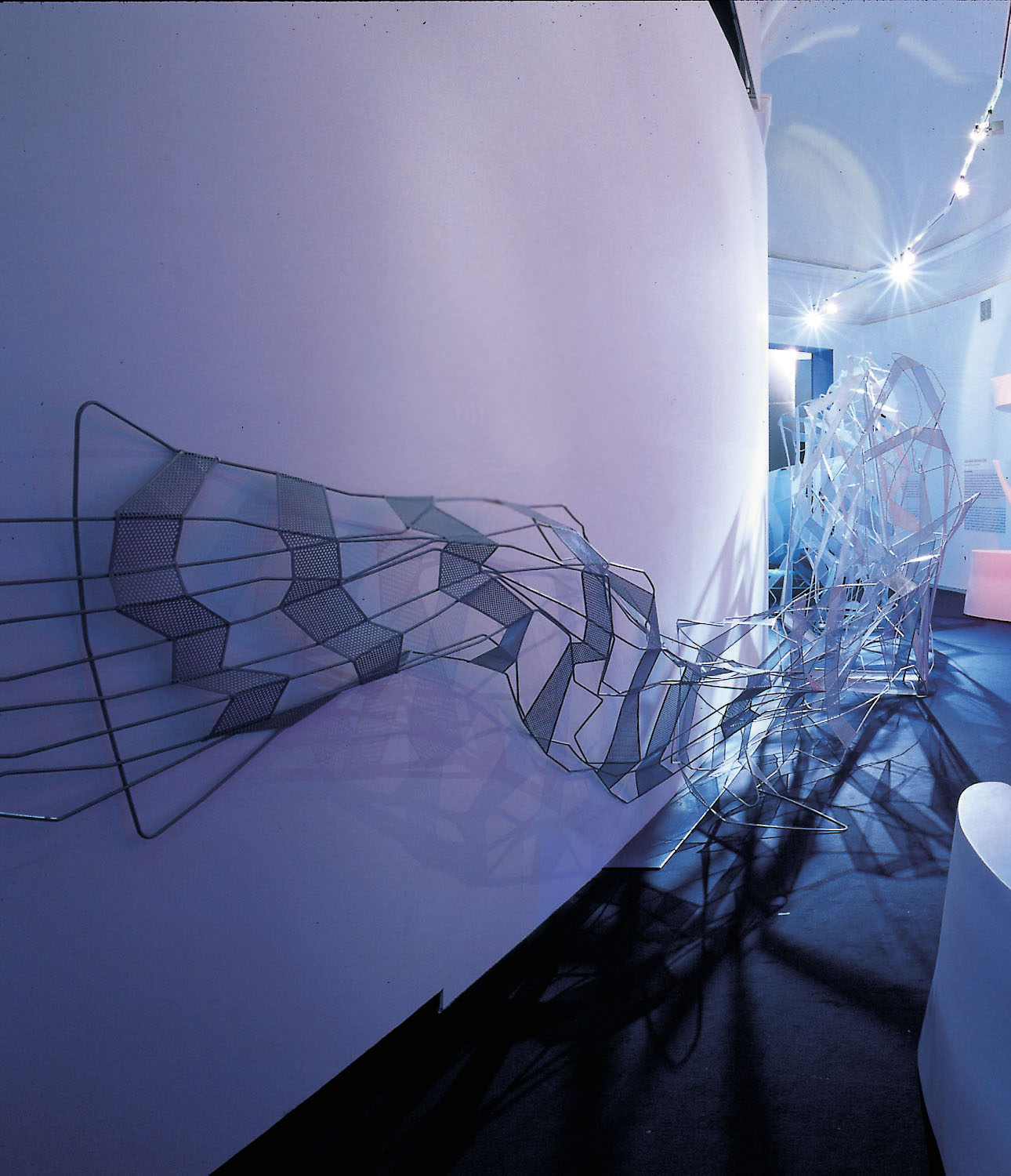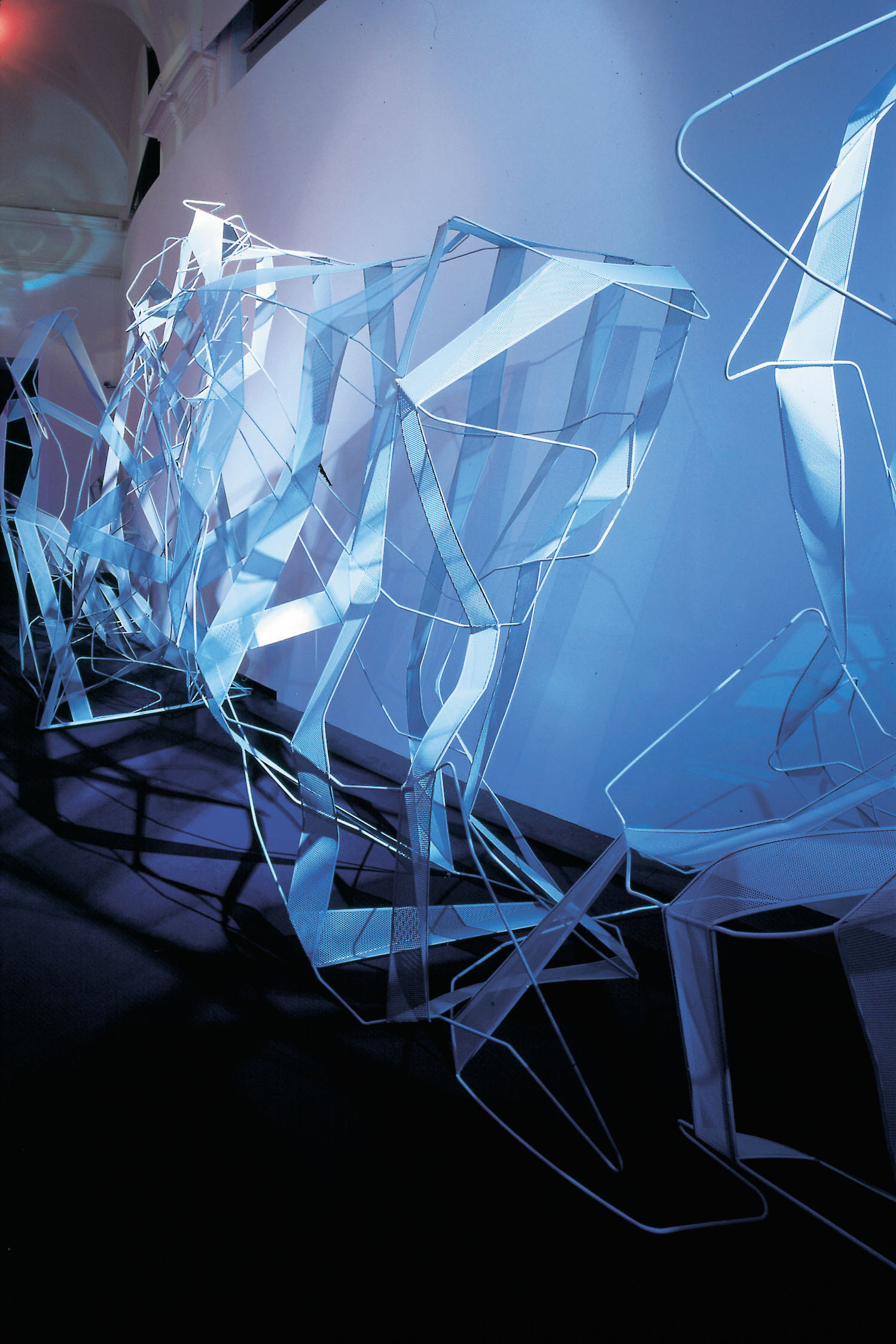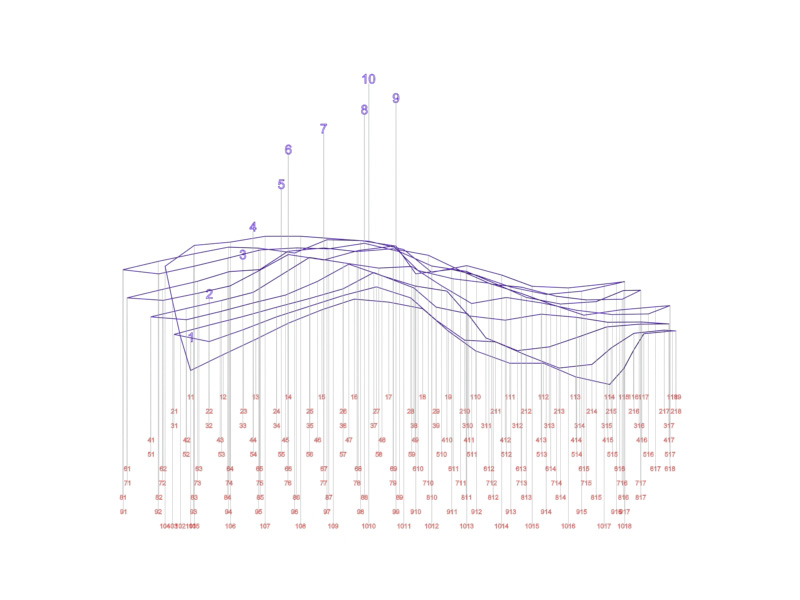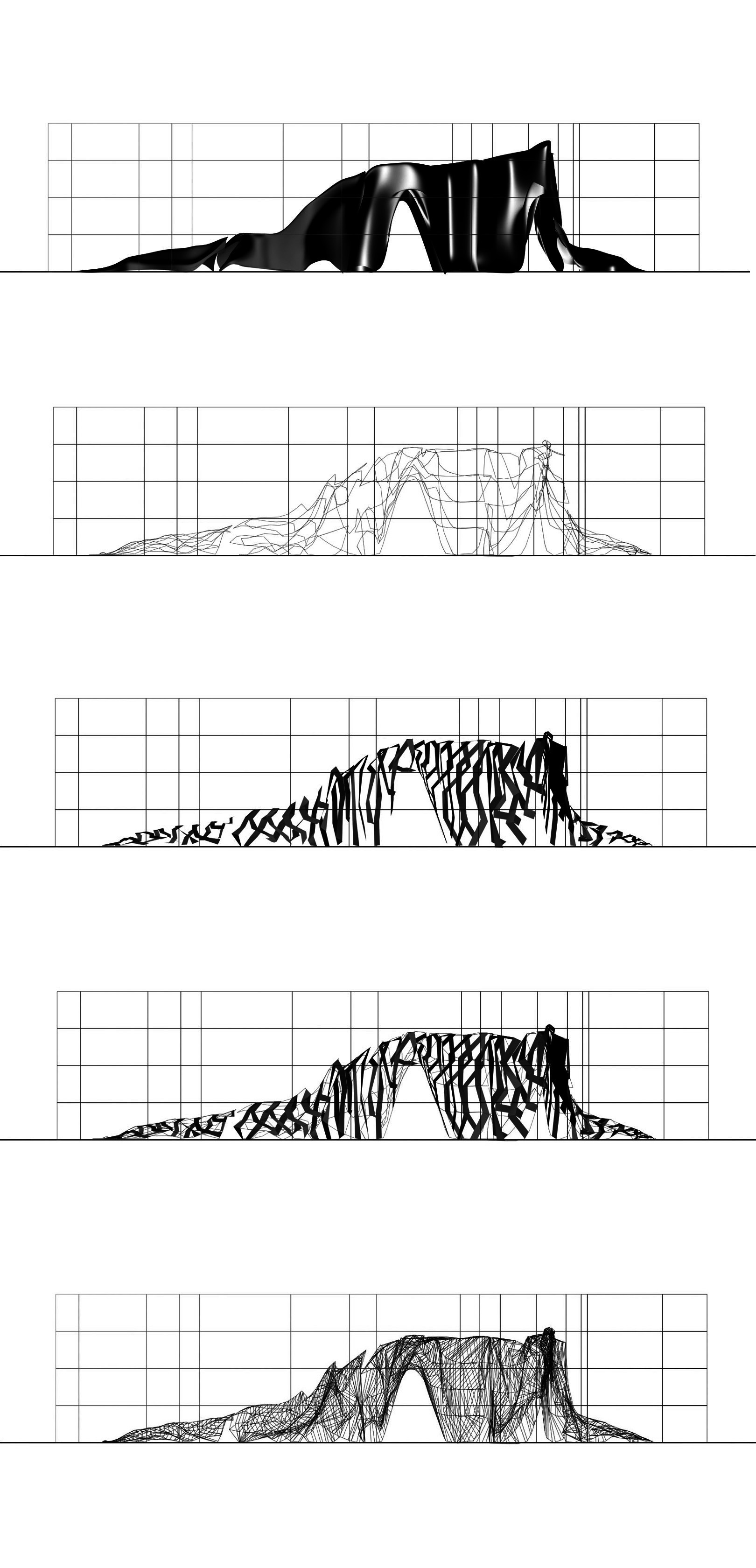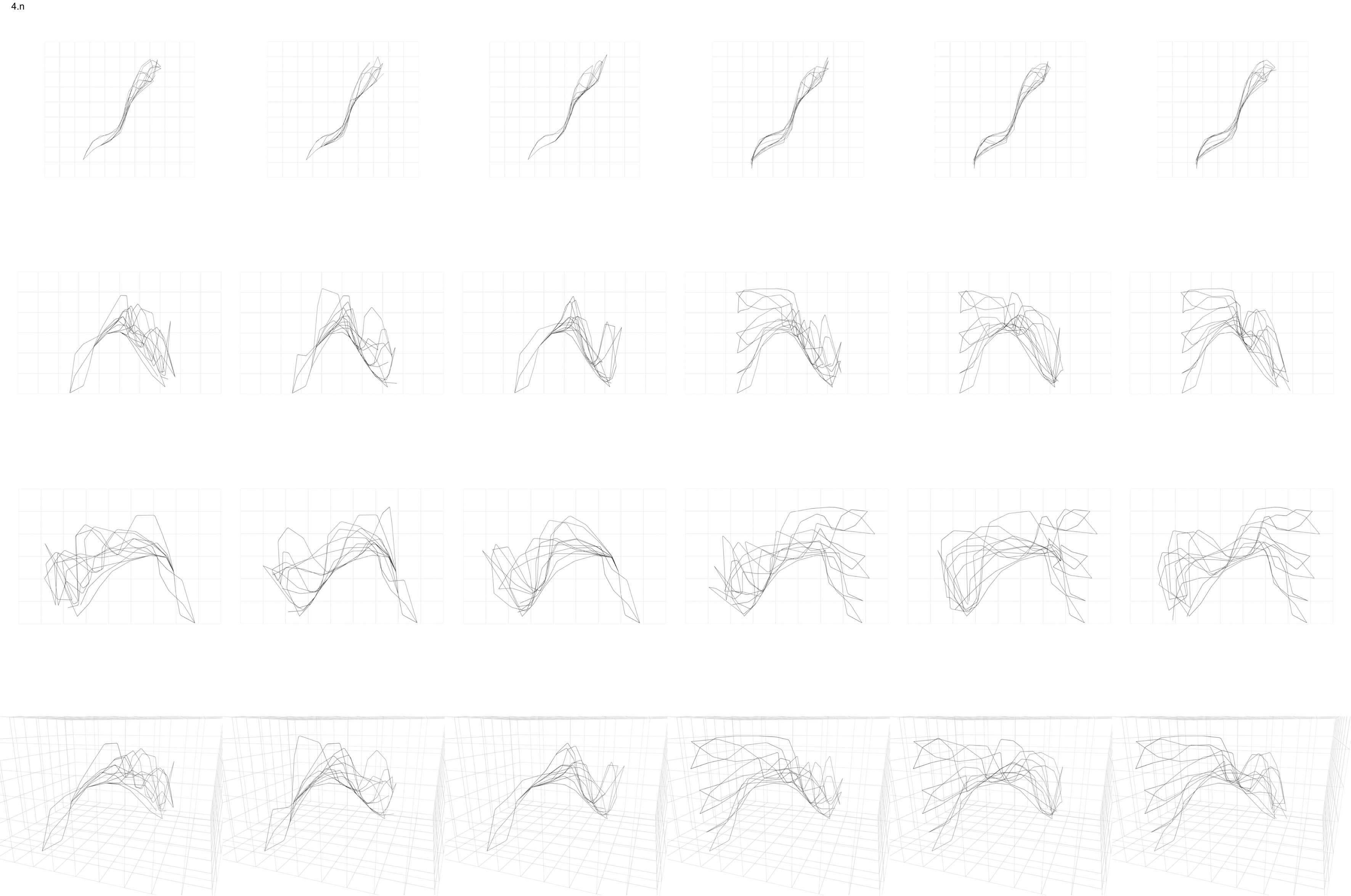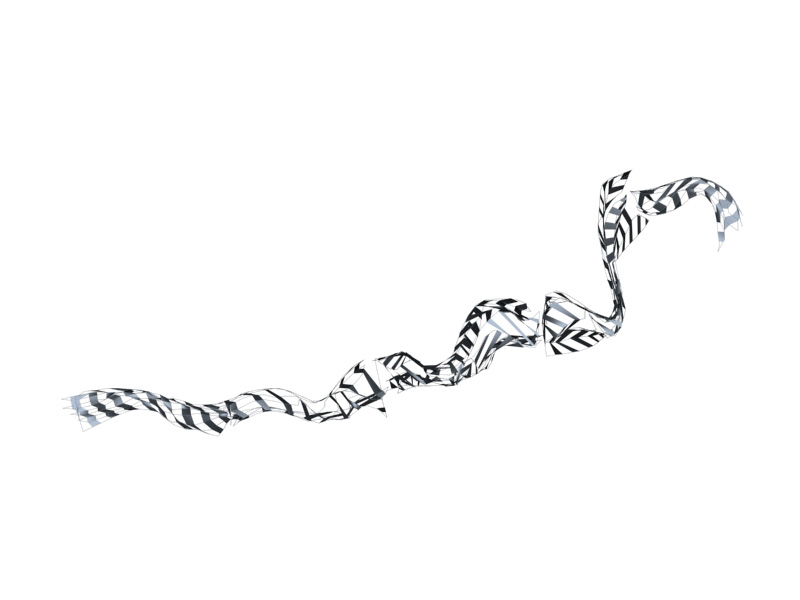GRAD8 Installation, Latent Utopias Exhibition, Graz, Austria
Commissioned for Latent Utopias: Experiments within Contemporary Architecture Exhibition
Curators: Zaha Hadid, Patrik Schumacher
Purchased by Clement Kopetsky, ABC TV
OCEAN D: Felix Robbins (designer), Alan Dempsey (designer), Tom Verebes (project co-ordination, design); Robert Elfer, Wade Stevens, Kevin Cespedes, Dirk Anderson, Masoud Mahboobullah; Stephan Silver (interactive consultant)
Adams Kara Taylor Consulting Engineers, London (structural consultant): Hanif Kara, Scott HullOval Workshop, London (manufacturer): Robert Ward, Joanna Carritt
Exhibitions:
- Latent Utopias: Experiments within Contemporary, Graz, Austria, 2002-2003
Publications:
- Hadid, Z., Schumacher, P., (2002). Latent Utopias: Experiments within Contemporary Architecture. (Riewe, R., Ed.). pp.89.
- Verebes, T., (2006). “OCEAN D”, World Architecture. Issue 04/2006 | 190. (Guest Ed. Gao, Y.). Beijing: Tsinghua University. pp. 88-101.
- Verebes, T. (2003). “Non-standard Species”, Latent Utopias: Experiments within Contemporary Architecture. (Hadid, Z., Schumacher, P., Eds.). Vienna: Springer-Verlag. pp. 190-198
- Aldersey-Williams, H. (2003). Zoomorphic: New Animal Architecture. (Aldersey-Williams, H., Ed.). London: Lawrence King. pp. 162-163.
The 5 installation objects exemplify the relation between a digital mode of production and a material organisation and the potential to modulate a material assembly to achieve an extreme formal variation within a set of constraining parameters. Non-standard topologies and organisations emerge from a logic of assembly of standard, readily available 8 mm welded steel tubes and strands of perforated sheet steel. The objects were scripted within a constraining volume, and are configured by 10 splines divisible into a metrically constant segment dimension of 250 mm, with pairs of splines joined to deploy 5 closed loops per object, with each spline welded at 2 points to the subsequent spline. A secondary set of splines generate a series of strands which negotiate the nearest intersecting spline to rigidify the loose lattice, causing a highly graduated density of material across the sequence of objects. A visually and spatially porous line articulates aserial transformation, never delineating a binary interior and exterior.

